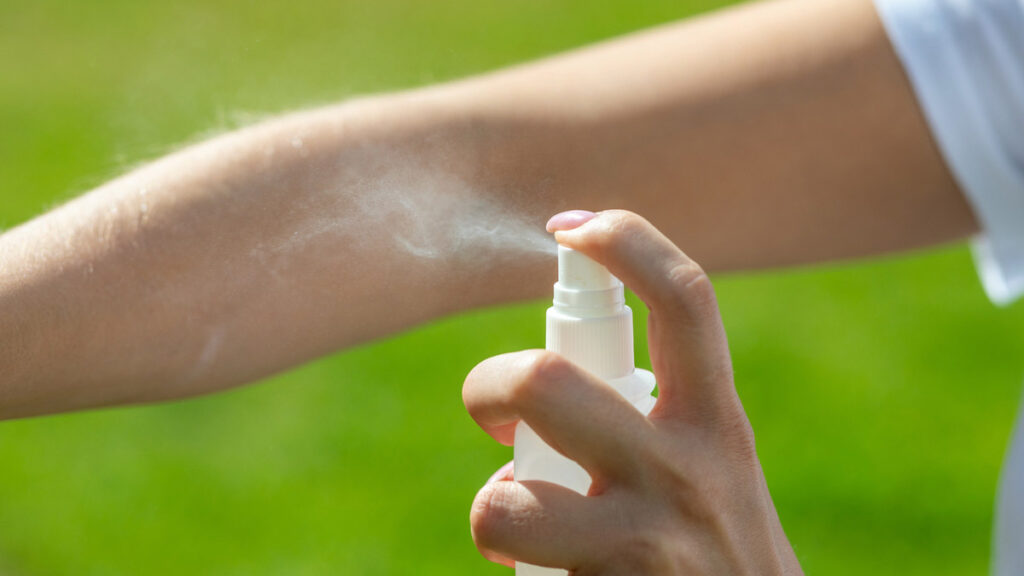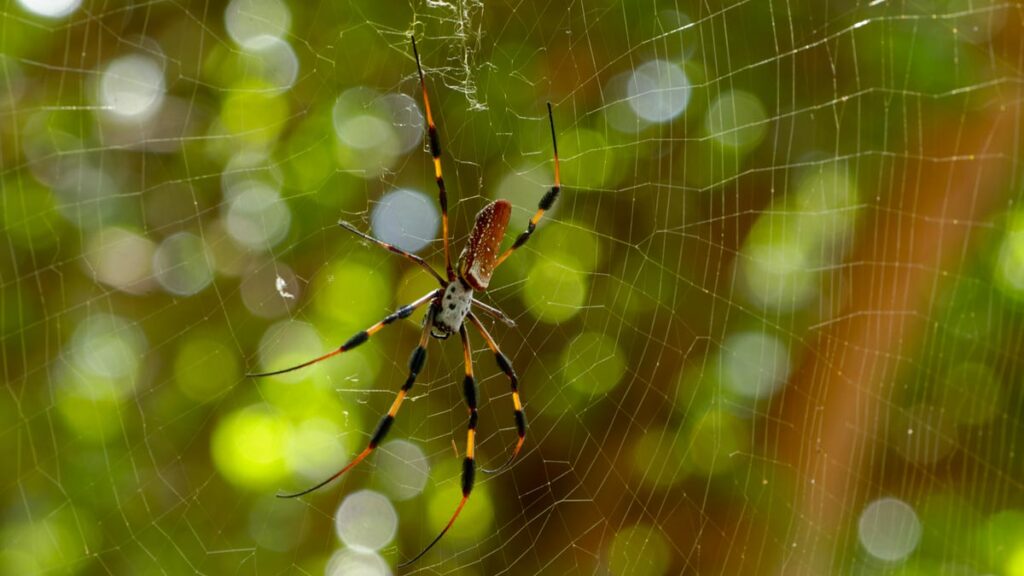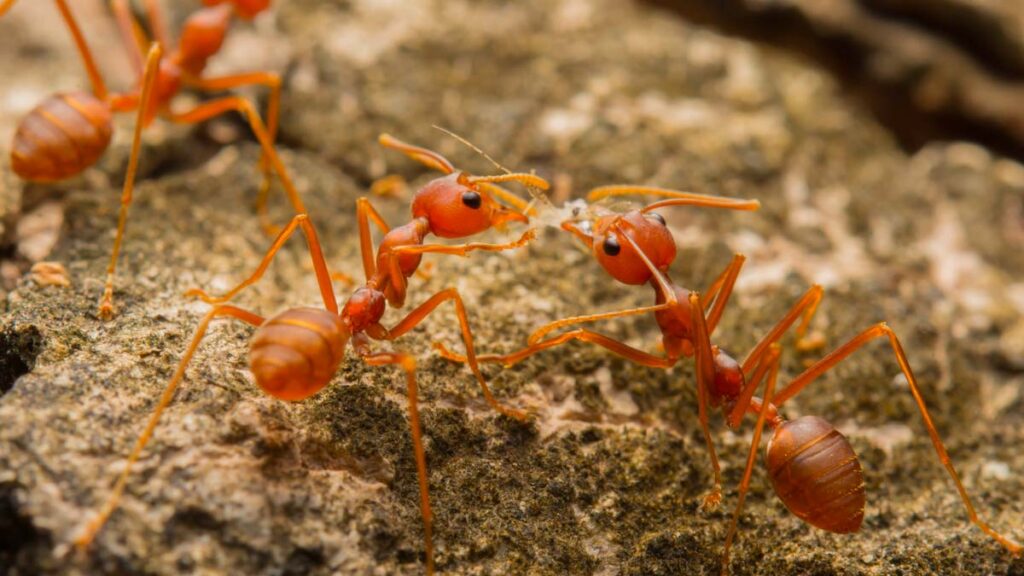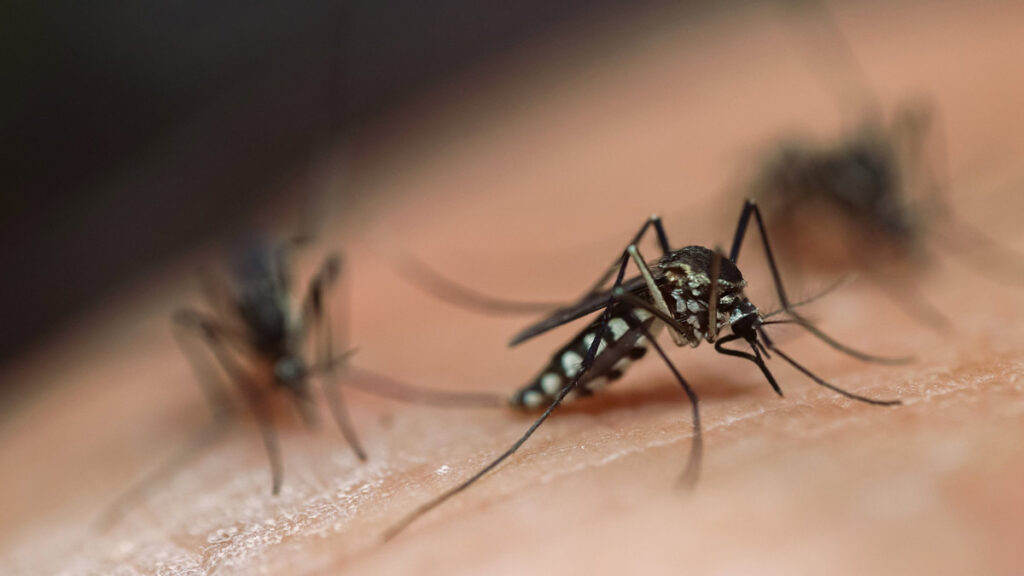
Preventing and Controlling Mosquitoes in Florida
A Guide
Updated on: January 2024
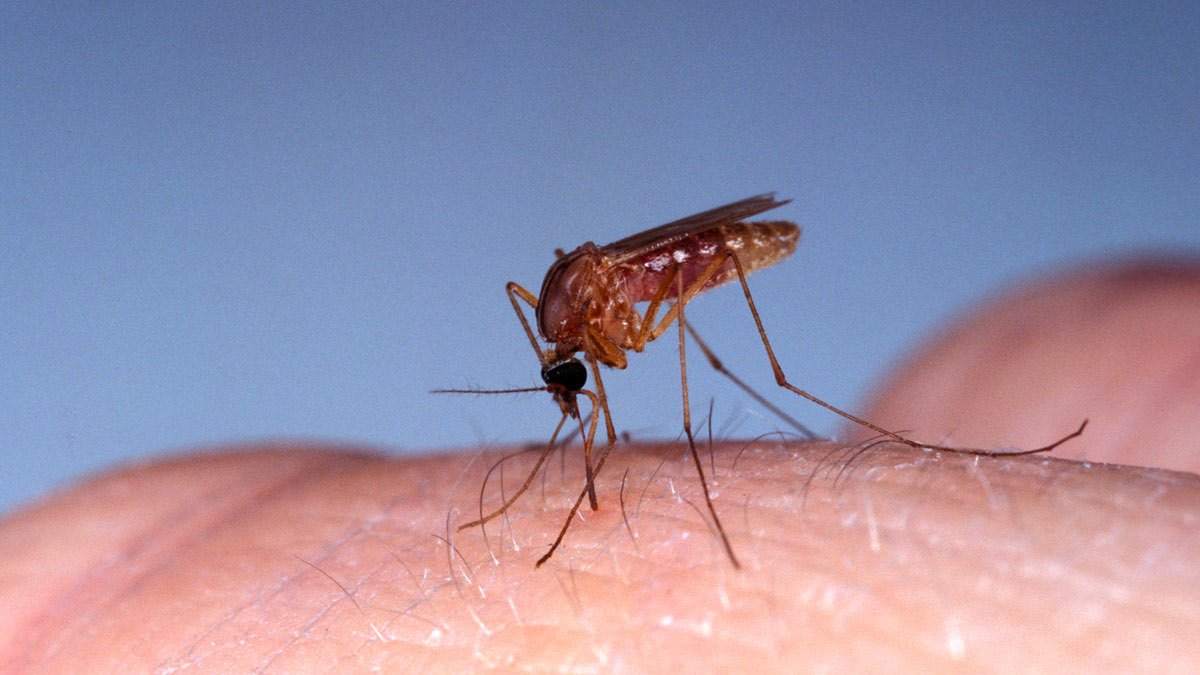
Florida’s lush landscapes and warm climate are renowned for attracting sun-seekers and nature enthusiasts year-round. However, along with its inviting weather comes a persistent challenge – mosquitoes. These tiny yet relentless insects have the ability to not only ruin outdoor enjoyment but also pose serious health risks through the transmission of diseases like West Nile virus, Zika virus, and dengue fever.
From understanding the factors that contribute to the high mosquito populations in the state’s unique climate to exploring emerging technologies that promise innovative solutions, we uncover the strategies that communities, individuals, and local government agencies employ to safeguard public health. With a focus on eco-friendly approaches, personal protection measures, and the importance of collaborative efforts, we equip readers with the knowledge needed to navigate the challenges posed by mosquitoes in different scenarios – be it fluctuating weather patterns or travel considerations.
Find What You Need
Understanding the Mosquito Challenge in Florida
Florida’s unique climate sets the stage for a persistent mosquito challenge. With its warm temperatures and abundant water sources, the state creates an ideal breeding ground for these pesky insects. The year-round warm weather allows mosquitoes to breed continuously, exacerbating the issue and making Florida the 2nd most mosquito-prone state in the United States.
Factors Contributing to High Mosquito Populations in Florida’s Climate
Florida’s unique climatic conditions provide an ideal breeding ground for mosquitoes, contributing to the state’s distinction as the second most mosquito-prone region in the United States. The synergy of warmth and humidity serves as a catalyst for the rapid acceleration of mosquito development. As female mosquitoes lay their eggs in stagnant water, these eggs transform into larvae within a remarkably short span of time, culminating in the emergence of adult mosquitoes within a matter of days.
The interplay of these factors intensifies the prevalence of mosquito populations across the state. With the advantage of a year-round warm climate, mosquitoes in Florida enjoy a continuous breeding cycle. This unceasing reproductive pattern exacerbates the challenge, significantly adding to the sheer number of mosquitoes present. This intricate web of environmental dynamics, encompassing temperature, humidity, and stagnant water, has effectively established Florida as a fertile ground for mosquito proliferation. Understanding these contributing factors is crucial for devising targeted and effective mosquito control strategies to counter the persistent issue and alleviate the burden imposed on Floridians by these disease-transmitting pests.
Risks of Mosquito-Borne Diseases and Their Effects on Communities
The implications of mosquito-borne diseases extend far beyond the irritation caused by their bites. In Florida, these disease-carrying mosquitoes pose a substantial threat to public health, sparking concerns that reach well beyond mere annoyance. Among the most worrisome diseases transmitted by mosquitoes in the state are West Nile virus, Zika virus, and dengue fever.
These diseases have the potential to trigger severe health complications, with symptoms ranging from mild discomfort to life-threatening conditions. West Nile virus can manifest with flu-like symptoms such as fever, headache, and body aches, often leading to neurological complications and even death in severe cases. Zika virus, while milder in most cases, can result in birth defects when transmitted from pregnant mothers to their unborn children. Dengue fever, characterized by high fever, severe headache, joint and muscle pain, and rash, can escalate into a more severe form known as dengue hemorrhagic fever, which can be fatal.
The presence of abundant water bodies in Florida, combined with international travel and trade, exacerbates the risk of disease introduction and propagation. The constant influx of people and goods serves as a potential conduit for the introduction of new pathogens, making Florida particularly vulnerable to disease outbreaks. As mosquitoes indiscriminately bite humans, their capacity to transmit these diseases can impact individuals and communities alike, affecting health, quality of life, and economic stability. Recognizing these risks underscores the urgency of effective mosquito control measures and underscores the need for public awareness and education to mitigate the potential impact of these diseases on Floridians.
Managing this challenge necessitates a multifaceted approach, addressing both the environmental factors that foster mosquito breeding and the health risks they pose to residents.
The Takeaway
Combining proactive measures such as eliminating breeding sites, embracing eco-friendly approaches, and fostering community involvement is essential to effectively prevent and control mosquito populations in Florida, safeguarding public health from the risks of mosquito-borne diseases.
Effective Strategies for Mosquito Prevention
To prevent the spread of mosquitoes it is crucial to eliminate their breeding sites using eco-friendly approaches.
Eliminating Breeding Sites
Removing Standing Water Sources
One of the most crucial steps in mosquito prevention is removing potential breeding grounds. Stagnant water in containers, bird baths, discarded tires, and even unnoticed objects like clogged gutters can become fertile breeding sites. Regularly emptying, covering, or treating these sources disrupts the mosquito life cycle. Brands like Altosid offer larvicide pellets that can be placed in water to prevent mosquito larvae from maturing. A package of Altosid pellets, costing around $15, can treat multiple areas.
Proper Waste Disposal and Property Maintenance
Proper waste disposal plays a vital role in reducing mosquito populations. Trash and debris can collect rainwater, creating prime breeding grounds. Regularly clearing yard debris, disposing of old containers, and maintaining property to prevent water accumulation are essential preventive measures.
Eco-friendly Approaches
Natural Mosquito Predators
Nature’s balance can play a pivotal role in mitigating mosquito populations. Incorporating mosquito-eating fish like Gambusia, also known as mosquitofish, into ponds and water features is a proven method. Brands like The Pond Guy offer Gambusia fish specifically bred to control mosquito larvae. A batch of 100 Gambusia fish, suitable for a medium-sized pond, can cost around $70. Additionally, attracting dragonflies to aquatic environments contributes to natural mosquito control, as these insects are voracious predators of both mosquito larvae and adults.
Plants and Landscaping
Leveraging nature’s own defense mechanisms, specific plants can act as natural repellents against mosquitoes. Citronella, a popular choice, emits a scent that mosquitoes find unpleasant, effectively discouraging them from lingering in the area. Brands like Southern Living Plant Collection offer citronella plants, available for around $10 per plant. Lavender and marigold are also effective options. Planting these varieties strategically in gardens, patios, and outdoor living spaces not only adds beauty but also helps create a mosquito-resistant zone. The cost of mosquito-repelling plants varies based on size, maturity, and supplier, allowing homeowners to tailor their landscaping efforts to their preferences and budgets.
Collaborative Efforts for Community Mosquito Control
Local government agencies and the community play an important role in controlling mosquito populations.
Role of Local Government Agencies
Guidelines for Mosquito Control in Urban Areas
Local government agencies in Florida play an indispensable role in orchestrating effective mosquito control strategies, particularly within urban areas. The Florida Department of Health serves as a linchpin, offering a repository of guidelines that guide municipalities in managing mosquito populations. These guidelines encompass a spectrum of best practices that extend from prevention measures to vigilant monitoring and robust control strategies.
Regulations and Practices to Reduce Mosquito Populations
Local authorities proactively engage in implementing a variety of regulations and practices aimed at curbing mosquito populations. A notable approach is strategic mosquito spraying, a practice often executed in high-risk areas. For instance, the Duet Dual-Action Adulticide, a popular mosquito control product, is utilized to target adult mosquitoes. This advanced formula combines pyrethroid and a synergist, maximizing effectiveness while minimizing the quantity of chemicals used. It’s important to note that, while effective, the environmental impact of such practices is taken into account. Duet Dual-Action Adulticide costs approximately $80 per gallon, and its judicious use underscores the delicate balance between mosquito control and environmental considerations. By adhering to these regulations and employing strategic practices, local government agencies play an instrumental role in safeguarding public health while maintaining ecological equilibrium.
Community Involvement and Education
Educating Residents about Prevention Measures
Education within communities is essential in mosquito control. Residents need to understand the risks posed by mosquitoes and their role in preventing breeding sites. Local health departments often organize workshops and awareness campaigns to impart knowledge about prevention measures, encouraging proactive participation.
Collaborative Actions to Minimize Disease Transmission
Community collaboration is essential to minimize disease transmission. Clean-up campaigns, where residents collectively address potential breeding sites, are a cornerstone of community involvement. Communities that engage residents and foster a sense of responsibility, can significantly reduce mosquito populations and the risk of mosquito-borne diseases.
Protecting Personal Spaces and Health
Safeguarding personal spaces and health from the relentless threat of mosquitoes in Florida requires a comprehensive approach encompassing preventive measures and effective repellent strategies.
Homeowner Measures
Homeowners have a pivotal role in minimizing mosquito infestations. Simple actions such as regularly emptying containers and bird baths, covering water storage, and maintaining swimming pools can eliminate breeding sites. Additionally, ensuring that outdoor areas are free from debris and standing water can greatly reduce mosquito populations around homes.
Constructing physical barriers like mosquito screens adds an extra layer of protection to indoor spaces such as a Florida Room. Installing fine-mesh screens on windows and doors effectively prevents mosquitoes from entering living areas while allowing fresh air to circulate. Companies like Phantom Screens offer retractable screen solutions starting at around $300, providing both comfort and protection.
Selecting and Using Mosquito Repellents
Proper application of mosquito repellents is paramount for personal protection. Applying a sufficient amount of repellent on exposed skin, following the manufacturer’s instructions, forms a barrier against mosquito bites during outdoor activities.
Selecting the right mosquito repellent is crucial. Products containing DEET, picaridin, or oil of lemon eucalyptus are recommended by health authorities like the CDC. Brands like OFF! and Cutter offer a range of repellent sprays, lotions, and wearable devices. Prices vary, with a typical 6-ounce bottle of repellent spray costing around $7 to $10. Opting for a repellent with the appropriate active ingredient for the intended level of protection ensures a safer outdoor experience.
Navigating Mosquito Risks in Different Scenarios
Weather Patterns and Impact on Mosquitoes
Weather patterns play a significant role in shaping mosquito populations. Heavy rainfall and hurricanes create ideal conditions for mosquito breeding as stagnant water accumulates in various locations. These conditions lead to a surge in mosquito populations, underscoring the importance of heightened preventive measures during and after such weather events.
Adapting outdoor activities to align with mosquito activity can significantly reduce the risk of bites. Mosquitoes are most active during dawn and dusk, so scheduling outdoor excursions during different hours or using protective clothing and repellents can help minimize exposure.
Travel Considerations
Preventing the Introduction of Invasive Mosquito Species When Traveling
Maintaining vigilance against the inadvertent spread of invasive mosquito species is vital when traveling. Brands like Thermacell offer portable mosquito repellers designed for outdoor use. These devices create a mosquito-free zone, making them useful for camping trips, picnics, and other outdoor activities. A Thermacell mosquito repeller, costing around $20, can provide effective protection against mosquito bites during travels.
Personal Protection During Travel to and from Florida
When traveling to or from Florida, safeguarding oneself from mosquito-borne diseases remains paramount. For travelers seeking comprehensive protection, brands like Sawyer offer travel-sized insect repellent lotions containing 20% picaridin. These lotions provide long-lasting protection and are suitable for tropical and subtropical regions. A 3-ounce bottle of Sawyer Picaridin Insect Repellent Lotion costs approximately $8. Additionally, packing lightweight and breathable mosquito nets ensures a peaceful night’s sleep, free from mosquito disturbances. Travelers that invest in travel-sized repellents and protective gear, can enjoy their journeys while minimizing the risk of mosquito-related health concerns.
Innovations and Research in Mosquito Control
Exploring the forefront of Innovations and Research in Mosquito Control unveils promising technological advancements and environmentally conscious approaches to tackling the persistent challenge of mosquito-borne diseases.
Emerging Technologies
Mosquito Traps and Genetic Modification
Advancements in technology are paving the way for revolutionary mosquito control methods. Mosquito traps that utilize a combination of UV light and CO2 to attract and trap mosquitoes are currently under development by companies like DynaTrap. These traps offer a chemical-free alternative, luring mosquitoes away from populated areas and reducing reliance on insecticides. Although prices vary based on model and features, a typical DynaTrap mosquito trap can cost around $150.
Research into genetic modification also holds promise. Scientists are investigating ways to modify mosquito genetics to diminish their ability to transmit diseases like dengue and Zika. Companies like Oxitec are at the forefront of this research, developing genetically modified male mosquitoes that carry a self-limiting gene. When released into the wild, these males mate with wild females, resulting in offspring that do not survive to adulthood. This innovative approach aims to reduce mosquito populations without the widespread use of chemicals.
Effectiveness and Environmental Implications of New Methods
While these emerging technologies offer potential solutions, careful evaluation of their effectiveness and environmental impact is imperative. Genetic modification introduces complexities concerning the broader ecosystem, and the long-term consequences need thorough assessment. Equally vital is understanding the effectiveness of mosquito traps in diverse environments and scenarios. Rigorous research and collaboration between researchers, regulatory bodies, and the public are essential to ensure that these new methods are not only effective but also ecologically sound, contributing to a sustainable and healthier future.
Ongoing Research and Surveillance
Continuous research and surveillance programs are crucial in understanding mosquito populations and the diseases they transmit. These programs track population trends, disease prevalence, and emerging challenges. They provide essential data for informed decision-making in mosquito control efforts. Examples of ongoing programs include the Florida Mosquito Control Association’s comprehensive surveillance network, which encompasses entomological data collection and disease monitoring.
Educational initiatives about mosquito-borne diseases play a pivotal role in early detection and timely intervention. The Florida Department of Health engages in extensive educational campaigns, reaching communities with information about the significance of mosquito control, personal protection strategies, and the importance of seeking medical attention at the earliest signs of illness. By raising public awareness about disease symptoms and transmission risks, these programs empower individuals to seek medical attention promptly, reducing the severity of potential outbreaks and their impact on public health.
Embracing a holistic approach that combines research, surveillance, and education underscores Florida’s commitment to safeguarding its residents from the menace of mosquito-borne diseases.
Conclusion
In the battle against mosquitoes, a combination of proactive measures proves essential. Eliminating breeding sites by addressing standing water, practicing proper waste disposal, and maintaining properties form the backbone of prevention. Embracing eco-friendly approaches such as introducing natural mosquito predators and incorporating mosquito-repelling plants complements traditional methods. As the Florida landscape continues to host mosquitoes year-round, collective action becomes imperative. Government agencies play a crucial role in formulating guidelines and regulations, but it’s the active involvement of communities that truly makes a difference. Educating residents about prevention measures, collaborative clean-up campaigns, and the responsible use of repellents create a unified front against mosquito-borne diseases. Florida can continue to enjoy its outdoor lifestyle while minimizing the impact of these buzzing nuisances on public health, by adopting these strategies and recognizing the interconnectedness of individual and community efforts.

